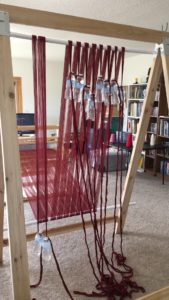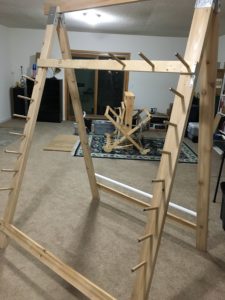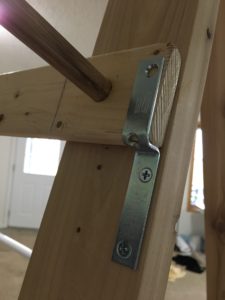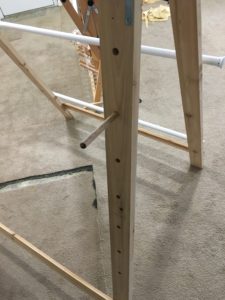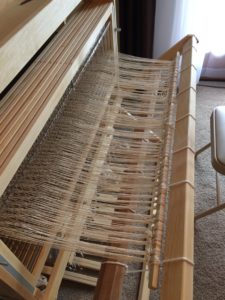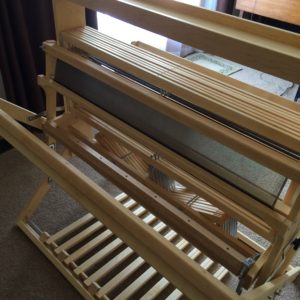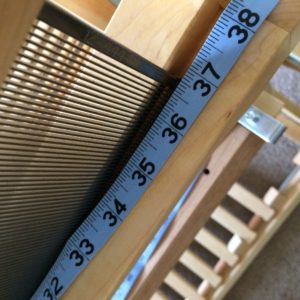Goals for this third project on my loom:
- Garment-weight cloth
- Twill weave
- Two different fibers
- Use my new 20-dent reed
Again, with this project, I dipped into my fiber stash. I selected a green 14/2 cotton for the warp. For the weft I chose a natural silk/wool blend that no longer has its label so I can’t be sure of the gauge. But, it’s very similar in size to the cotton.


My plan was to sley two ends per dent in the reed and, with the limit of how many heddles I have, I needed a total of 1152 warp ends. I also chose to do a longer warp than the previous warp. This time I made 12 yards of warp.

In the warp measuring process, I ran out of the green.
Time to change my plan a little. I added some yellow. The result was that I used three ends of yellow in every 16 ends, resulting in yellow pin stripes on the green.
I opened up the Fiberworks program to see what it might look like. I can live with that. It wasn’t my original plan, but, this is my adventure! Sometimes you have to make it up as you go. 🙂

With this revised plan, I continued my warping. The following are a set of pictures to help show the progress.
I started measuring the warp on February 14, 2017, and completed the measuring on February 19, 2017.
I started warping the loom on February 19, 2017 and completed the warping on March 4, 2017.























